
I was out walking my dog Finzi this morning, and it was the usual mad chase through fields and ditches. She loves jumping into pools of water, and that’s probably where something went wrong.
She was walking normally but when I got back to the car, I noticed that she was leaving smudges of blood on the ground behind her. When I checked her feet, she had an obvious cut on the front of her back right foot – 1cm wide, around 5mm deep. She must have stood on a hidden piece of broken glass in the water somewhere. I thought I’d use this opportunity to show folk what to do if this happens at home.
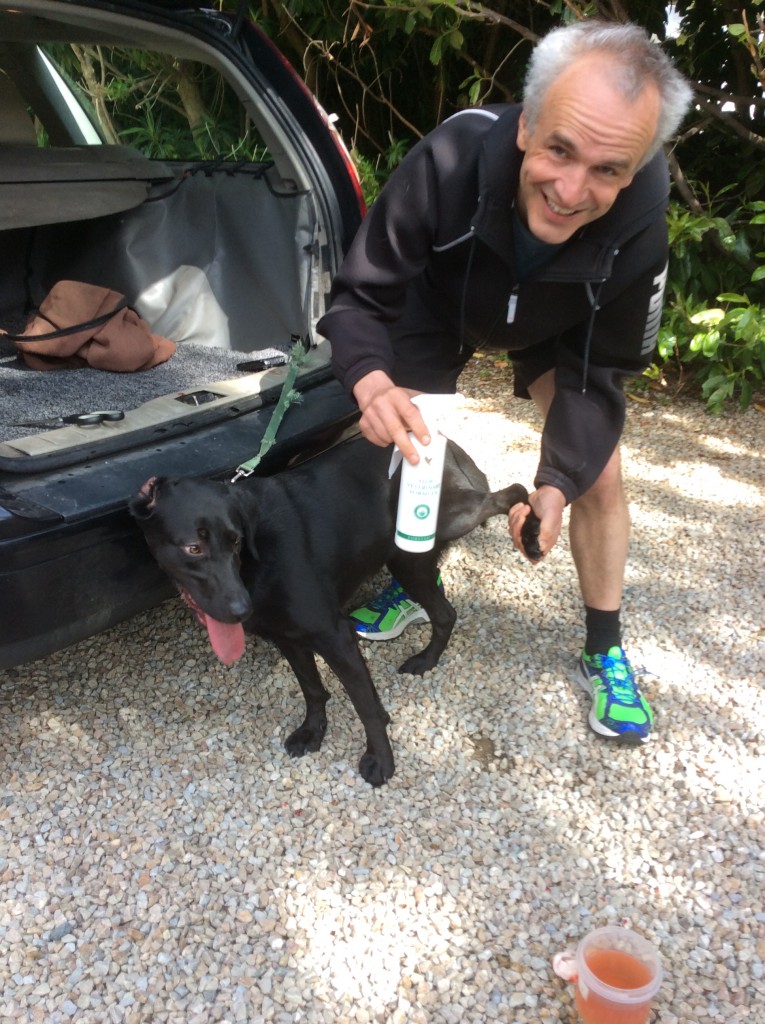
First, clean the cut: I used salty water then Aloe Vera Veterinary Spray
It’s important to clean a cut to avoid infection and to promote healing. I used salty water (a teaspoonful of salt in a pint of warm water – see the tub on the bottom right of the picture) and then I sprayed it with Forever Living Aloe Vera Veterinary Spray.
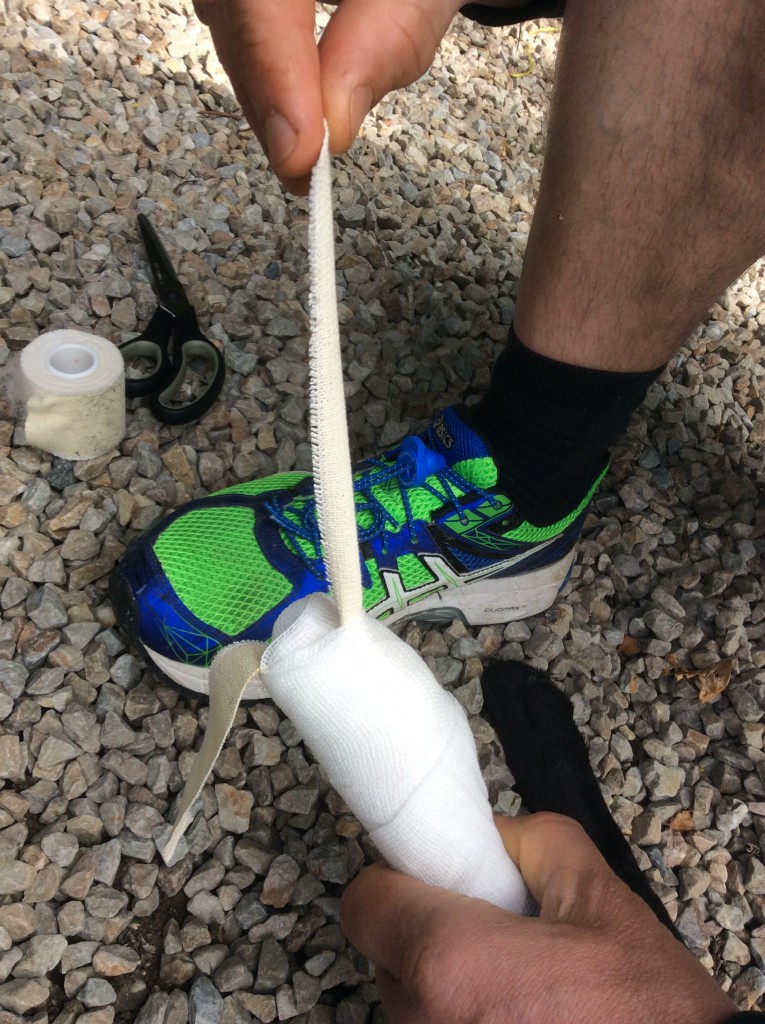
A cut pad needs to be bandaged to protect the wound
I then applied a sterile non-adhesive dressing known as Melolin followed by a simple conforming bandage (I used Mollelast) to hold it in place. The big challenge with dogs is that they tend to remove dressings, and so they have to be attached as securely as possible. I used Tensoplast, which is an adhesive elastic bandage, to create “stirrups” that attach to her fur, then protrude out of the end of the dressing, then fold back onto the top of the dressing. It’s hard to describe in words, but basically it stops the dressing from slipping off easily.
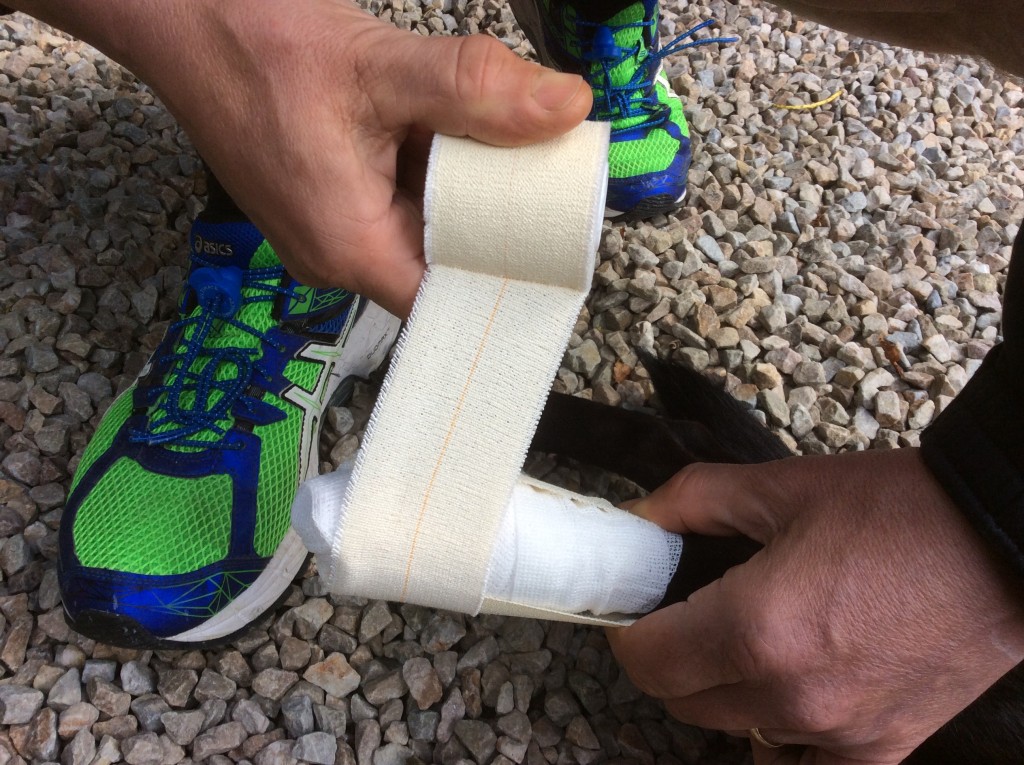
The elastic adhesive bandage is then applied over the whole dressing
I then used Tensoplast to wrap around the whole dressing. I have to add here that veterinary nurses do a far better job at bandaging than myself: I tend to be too impatient and in a hurry. So any vet nurses reading this: yes, I do know this is not perfect :-)
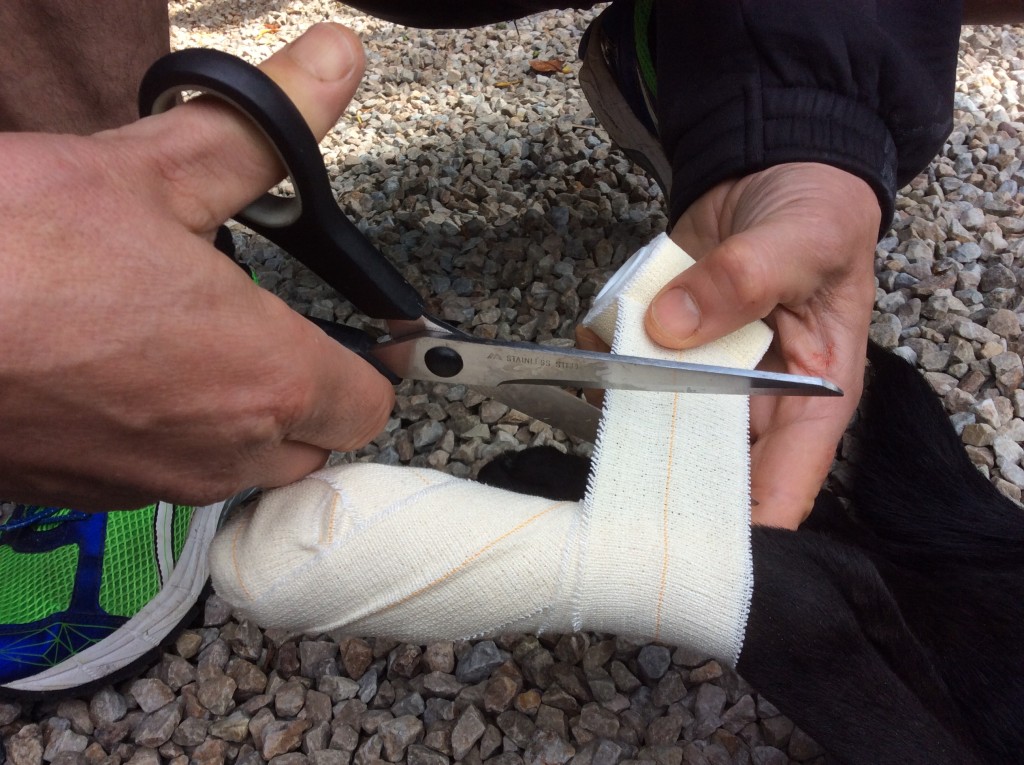
The elastic adhesive bandage is cut off carefully
Once it’s done, the Tensoplast is cut off leaving the right length so that it can be finished off at the back of Finzi’s leg. When dogs start to chew dressings, if they can get their teeth onto that end piece, then can pull and pull, unravelling it. So if the end piece can be kept out of reach (i.e. at the back of the leg), they’re less likely to be able to get started and the dressing is more likely to stay on.
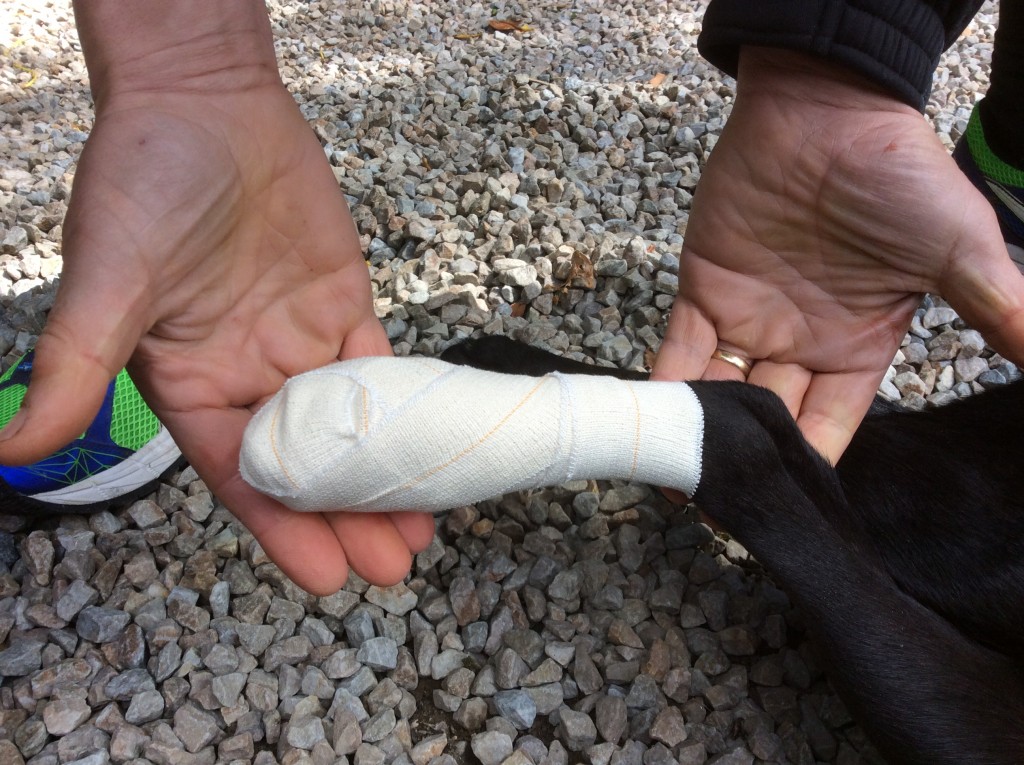
The dressing is complete but how long will it stay on?
So the job is now done: it looks comfortable and secure. We need to keep it dry now, and will probably change it every 3 – 4 days if it stays on. The cut pad will probably take about 10 days to heal fully.
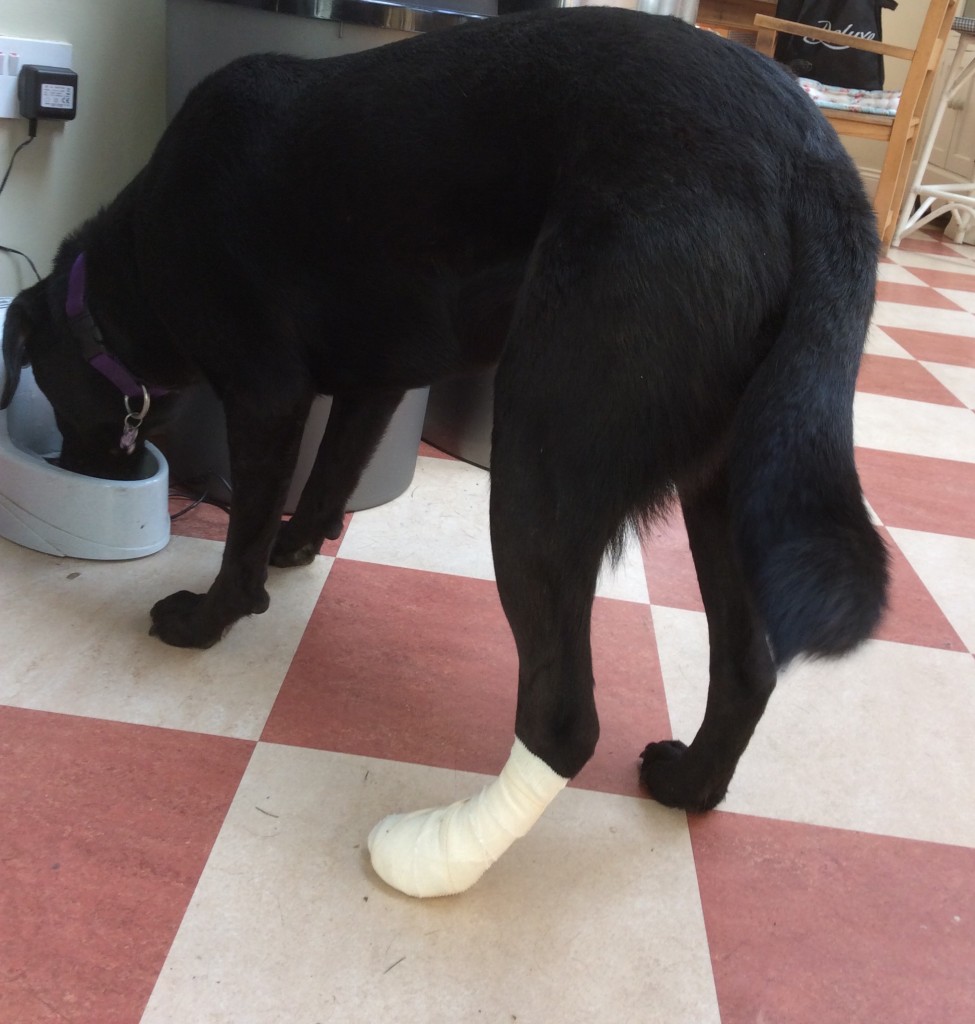
Finzi enjoying a drink of water after her minor ordeal
So far, Finzi has left her dressing alone. How long will that continue to be the case? If she does start to chew it, she may need an Elizabethan collar. Only time will tell.
This type of simple wound cleaning and dressing application is the type of home first aid that anyone should be able to do. The most difficult aspect is simply keeping the patient still, so it’s definitely a two-person job.




4 Comments
Poor Finzi.. at least she was with the right person to fix a cut paw.. hope she get better really quick..
Hi Pete, hope Finzi leaves dressings alone, here’s a question, where can an owner get bandaging when needed?
Saffy has a torn nail bed but has had correct veterinary care. Can anyone suggest good ways of keeping the foot clean and dry? So far tried child’s sock, kept in place (for a while) with vetwrap, covered by plastic bag – not very good. Ideas/help very welcome – thank you!
sometimes it helps to have sticky tape directly to the fur, as well as the sock. See here https://thelabradorforum.com/threads/dogs-bandage-fell-off-help.17623/
Please note that I am unable to answer veterinary questions in comments. If you have questions or concerns about your pet's health it is always better to contact your vet.